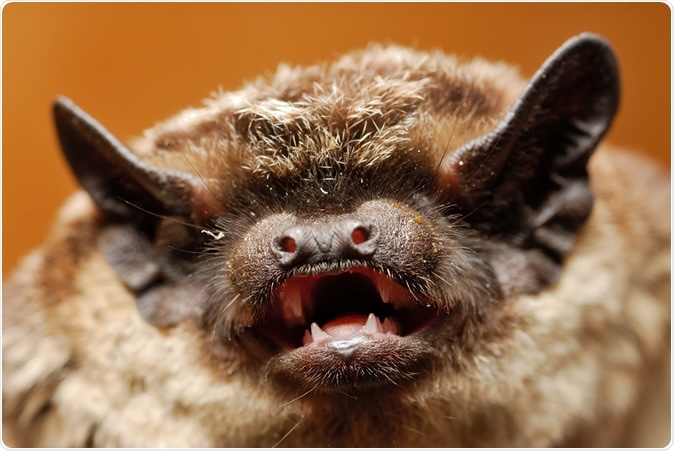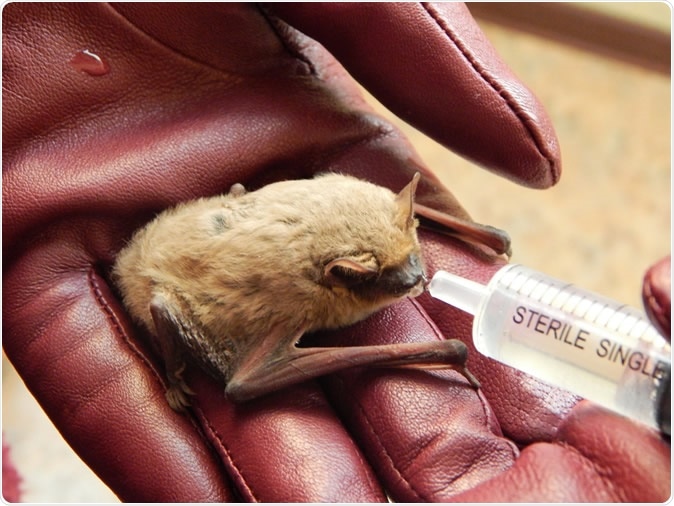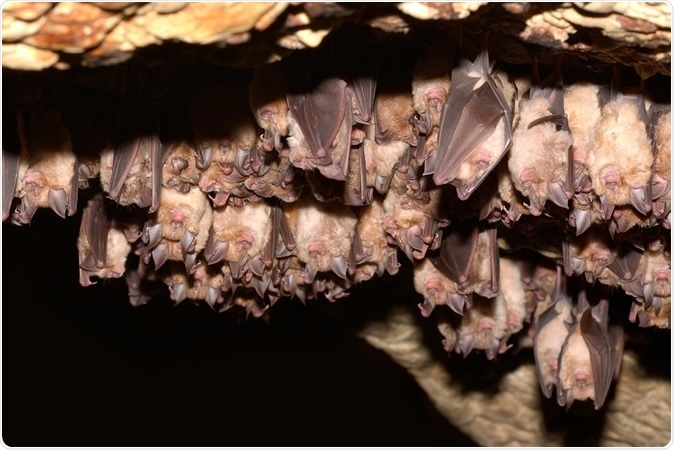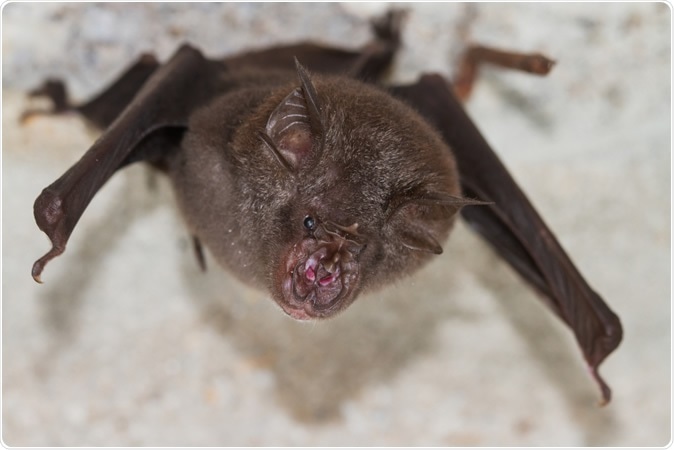Findings from a study conducted by Chinese researchers suggest that similar species of bats carry similar viruses and that when these bats reside in overlapping areas, transmission between species occurs more easily.
The authors say the study provides an important basis for studying the evolutionary history of bats and viruses in the context of understanding how to monitor host species and endemic areas to prevent and control emerging viruses.
Bats are reservoirs for coronaviruses and paramyxoviruses that have been responsible for various life-threatening pandemics including the severe acute respiratory syndrome (SARS) outbreak in 2002–2003, the Middle East respiratory syndrome (MERS) outbreak in 2012, the 1994 Hendra virus (HeV) outbreak and more recently, the novel coronavirus 2019 (COVID-19) outbreak.
“It is important to understand the bats-viruses evolutionary history”
Given that bat-borne viruses are already known to be relatively host-specific, the researchers wanted to investigate this host specificity to see whether bats, as an ancient species, may have co-evolved with the coronaviruses and paramyxoviruses they carry.
“It is important to understand the bats-viruses evolutionary history and rules for the virus tracing,” say the authors… “This is the first systematical summary elucidating the relationship between coronaviruses, paramyxoviruses, host and geographical areas. It provides a theoretical basis for the viruses’ trace.”
For the study, Libiao Zhang (Guangdong Institute of Applied Biological Resources) and colleagues performed co-evolution analyses using nucleotide sequences of the RNA dependent RNA polymerase (RdRp) gene from 60 coronaviruses found in 37 bat species and of the RNA polymerase large (L) gene from 36 paramyxoviruses found in 29 bat species.
The team says the findings confirmed their hypothesis that coronaviruses and paramyxoviruses co-evolve with their bat hosts. The results can be found in a pre-print version of the paper (currently available in Research Square), which is undergoing peer review.
MERSr-CoVs and human and camel MERS-CoVs
The study found that MERS related coronaviruses (MERSr-CoVs) isolated from the host species Pipistrellus hesperidus (P. hesperidus; found in Uganda) and Neoromicia capensis (N. capensis; found in South Africa) were the most closely related to MERS-CoVs carried by humans and camels.
The nucleotide sequencing similarity between the isolates was more than 91%, and both bat species are members of the Vespertilionidae family, suggesting that the viruses may have evolved from a common ancestor that infects different species of bats found in Africa.
MERSr-CoVs isolated from the Pipistrellus abramus bat, the Tylonycteris pachypus bat and the Myotis daubentonii bat also shared a nucleotide sequencing similarity of more than 83% with camel and human MERS-CoVs and all these bat species are distantly related to the N. capensis bat.

Daubenton's bat - Myotis daubentonii. Image Credit: D. Kucharski K. Kucharska / Shutterstock
Other viruses isolated from N. capensis, Hypsugo pulveratus, Vespertilio sinensis, Hypsugo savii, and Pipistrellus kuhlii shared a sequencing similarity with camel and human MERS-CoVs of more than 85%. Of these hosts, the Vespertilio sinensis, Hypsugo pulveratus, Hypsugo savii bats are closely related to the N. capensis bat and the Pipistrellus kuhlii bat is closely related to P. hesperidus.
The team says the 99.46% similarity in nucleotide sequencing and areas of bat host distribution between isolates from host Hypsugo savii and host Pipistrellus kuhlii suggests that the viruses might have originated from inter-species transmission of the same coronavirus strain in bats.

Pipistrellus kuhlii bat. Image Credit: Yakovchenko Iryna / Shutterstock
“We speculate that the ancestors of the hosts of bat MERS-CoVs may be Vespertilionidae bats that are evolutionarily close to N. capensis and P. hesperidus bats distributed between West Asia and East Africa, and more attention should be pay on N. capensis,” writes the team.
SARSr-CoVs
SARSr-CoV isolated from Rhinolophus ferrumequinum (R. ferrumequinum) shared a sequence identity of 99.71% with another R. ferrumequinum isolate and a 99.68% similarity with a further R. ferrumequinum isolate.

Group of Greater horseshoe bat (Rhinolophus ferrumequinum). Image Credit: Shutterstock
“This high pairwise nucleotide sequence similarity among SARS-CoVs suggests that their hosts might be derived from the same ancestor.”
One SARSr-CoV isolate was also found in the Aselliscus stoliczkanus host – a species that is phylogenetically related to the Rhinolophus bat.
The team says their study found that Rhinolophus bats were mostly found to be infected with SARSr-CoVs, while Vespertilionidae bats were mostly found to be infected with MERSr-CoVs, thereby demonstrating the host specificity of these coronaviruses.

Least Horseshoe Bat (Rhinolophus pusillus). Image Credit: Binturong-tonoscarpe / Shutterstock
Bat species and paramyxoviruses
On analyzing the cophylogenetic relationships between bat species and paramyxoviruses, the team found that group 1 paramyxoviruses are mostly carried by Hipposideridae bats, which are from Africa and tropical Asia. Pteropodidae bats in Africa mainly carry group 2, and the hosts carrying group 3 are closely related to the Phyllostomidae and Mormoopidae families, which are found in the Americas. Group 4 paramyxoviruses are carried by Vespertilionidae bats, which are found in Europe, Asia, and Africa
“These observations suggest that closely related viruses share similar host species and that these viruses were carried by an ancestor bat that migrated from one region to another and then diverged into different bat species,” writes the team.
“Continual surveillance” is warranted
The researchers say that overall, the findings indicate that similar bat species share the same geographical location and that these similar species carry similar viruses. The study also suggests that overlapping distribution areas are needed for inter-species transmission.
“Therefore, the similarity of bat viruses is related to both the evolution and geographical distribution of their hosts,” writes the team.
Liang and colleagues also suggest that outbreaks may be related to how species are distributed in a given area.
“Continual surveillance of natural bat hosts of emerging viruses and endemic areas of viruses is warranted,” concludes the team.
Journal reference:
Zhang L, Liang J, Zhu C. Coevolution of Coronavirus and Paramyxovirus with Their Bat Hosts in the Same Geographical Areas. Research Square; 2020. DOI: 10.21203/rs.3.rs-21963/v1, https://europepmc.org/article/PPR/PPR150742